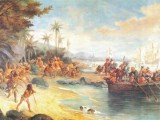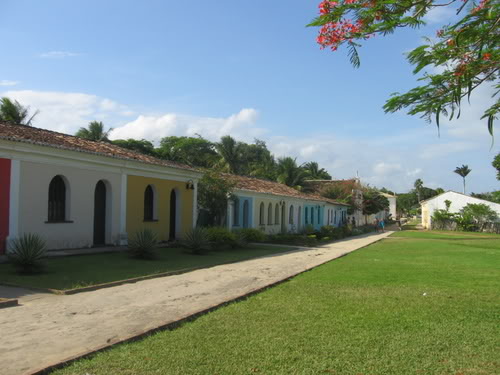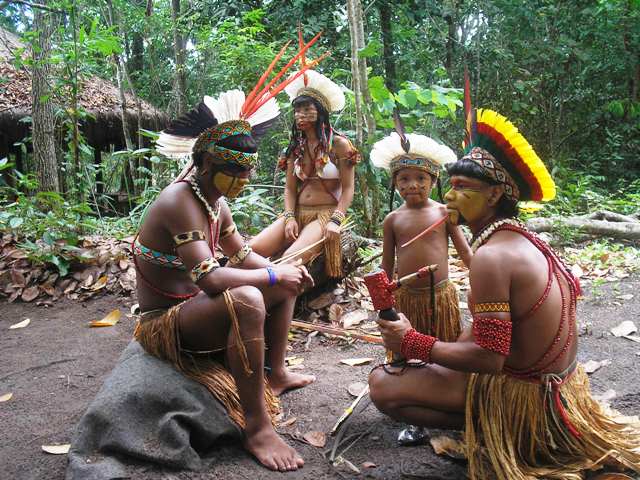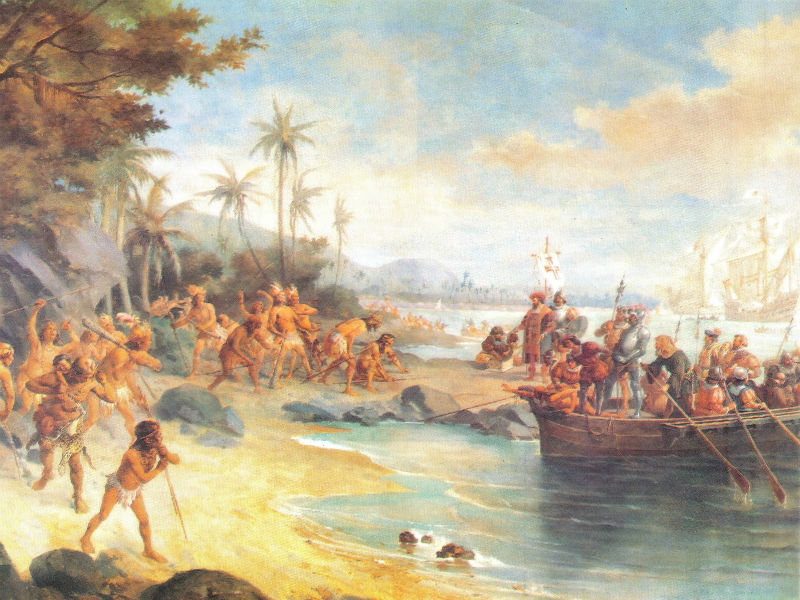Este post também está disponível em:
Português
English

The Colonization of Brazil was a process of settlement, exploration and domination of the territory, since the Portuguese Court believed in the hypothesis of having the Brazilian territory invaded and taken if it was not occupied.
Despite these intentions, the Portuguese Court also aimed to turn the new territory into a source of income for Portugal.
Indians were undoubtedly the first colonizers of Brazilian lands. It is not known for sure the origin of these peoples, it is believed that the Indians came from Asia and Oceania through the Behring Strait or the Pacific Ocean.
View the map Costa do Descobrimento e View the map of Porto Seguro beaches
Map of the city of Porto Seguro
In 1516, under the command of Dom Manuel I, the Portuguese Court sent people willing to start the settlement in Brazil and gave them tools so that they could start the clearing of some lands.

Two years after the arrival of the Portuguese, the Indians invaded and destroyed the colony established in Porto Seguro. After this attack, Brazil remained until 1530 without receiving new people intending to reside there.
In the year 1530, Dom João III, king of Portugal at the time, sent Martim Afonso de Souza to Brazil to explore its territory in search of minerals and also make strategic demarcations in the territory in order to benefit the extraction of minerals.
With full autonomy given by the king, Martim Afonso designated authorities and distributed land to those who undertook to carry out the mission determined by the king. Almost the entire coast was explored by Martim Afonso and his expeditions.
On the coast of São Paulo, the first settlements of the country were established, where the first plantations of sugar cane were formed, in addition to the first mills.
History of Porto Seguro and the discovery of Brazil
Around the year 1000, the indigenous Tapuí tribes that inhabited the region were expelled to the interior of the continent due to the arrival of Tupi peoples from the Amazon.
In the 16th century, when the first Portuguese arrived in the region, it was inhabited by the Tupi tribe of Tupiniquins.
Porto Seguro is located in the region that was officially the first to be discovered by Portuguese navigators in the current Brazilian territory.
On April 21, 1500, the navigator Pedro Álvares Cabral sighted dry land, after having left the African coast a month earlier.
The place sighted was Mount Pascoal, 62 kilometers south of Porto Seguro. The next day, the Portuguese landed on dry land for the first time in what is now Brazilian territory, at a location whose exact spot is still debated by historians.
On April 24, the expedition anchored in Porto Seguro. The city had its first fort built in 1504 by Gonçalo Coelho.
In 1530, when trade with the East Indies weakened, Portugal became interested in the newly discovered land and came to take possession of it.
This was the land that it was entitled to by the Treaty of Tordesillas. In colonial times, Porto Seguro was called Nhoesembé.
Visiting the historic site of the Cidade Alta de Porto Seguro is almost a must for the thousands of tourists who come to Porto Seguro – a National Monument city established by presidential decree in 1973.
One of the first residential centers in Brazil, Porto Seguro, in addition to boasting the Marco do Descobrimento, played an important role in the early years of colonization. Historical buildings from this period can be visited during the day or appreciated at night, when under special lighting.
The historical tour can begin at the Marco do Descobrimento, from where you can see one of the most beautiful landscapes of the coast of Porto Seguro. The landmark came from Portugal between 1503 and 1526 and symbolizes the power of the Portuguese crown, used to demarcate their lands.
All in ashlar stone, on one side is carved the cross of the Order of Avis and on the other, the coat of arms of Portugal.
In the same area is the church of Nossa Senhora da Pena, built in 1535 by the captaincy’s grantee, Pero do Campo Tourinho. It houses sacred images from the 16th and 17th centuries, including that of Saint Francis of Assisi – the first image brought to Brazil – and that of Our Lady of Pena, the city’s patron saint, celebrated on September 8.
To get a better idea of what the captaincy was like in the century of Tourinho and the arrival of the Jesuits, you can read some excerpts from the letters written by Manuel da Nóbrega or José de Anchieta, priests of the Society of Jesus, about the region.
Further on, the Municipal Palace or House of Chamber and Jail, dating from the 18th century, one of the most beautiful buildings of colonial Brazil. This building houses the city’s Historical Museum or Discovery Museum.
The church of Misericórdia, or Senhor dos Passos, has a simple style and houses baroque images, especially the Senhor dos Passos and the crucified Christ.
Still in the midst of the houses listed as national monuments, stands the church of São Benedito, next to the ruins of the former residence and college of the Jesuits. The church was built by the Jesuits in 1551 and was known as São Pedro and Nossa Senhora do Rosário.
On the opposite side, still in the Upper Town, are the bus station and the airport. In the 17th century, the fort that had been raised by Gonçalo Coelho was reinforced.
Bahia.ws is the largest travel and tourism guide for Bahia and Salvador.





















